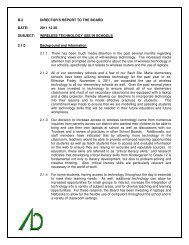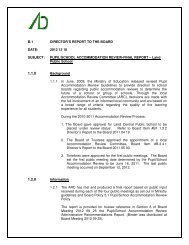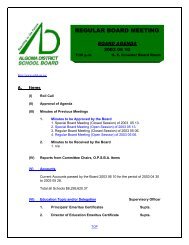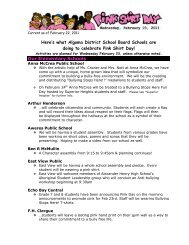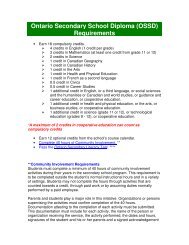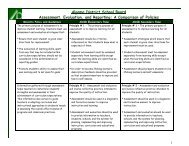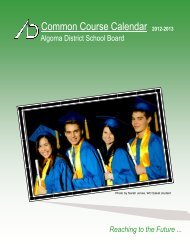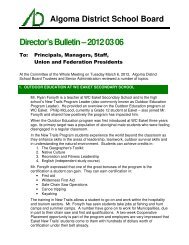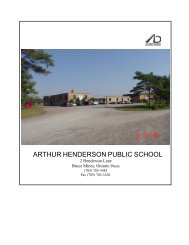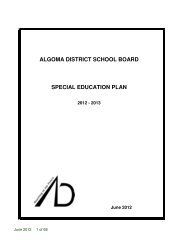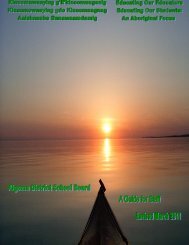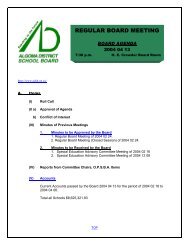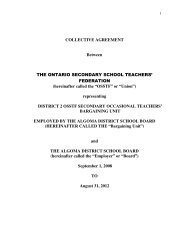Educating Our Educators Guide for Staff - Algoma District School ...
Educating Our Educators Guide for Staff - Algoma District School ...
Educating Our Educators Guide for Staff - Algoma District School ...
- No tags were found...
You also want an ePaper? Increase the reach of your titles
YUMPU automatically turns print PDFs into web optimized ePapers that Google loves.
A Distinctive WorldviewHundreds of different First Nations in Canada existed at one time, while only about fifty different nations exist today in anysignificant strength of numbers. Each nation had or has its own protocols in ceremony, general etiquette and basic waysof life. The fundamental essence of the First Nation world view, however, is unity or the oneness of allthings — how we are all in the circle of life. <strong>Our</strong> daily work is to work towards living in harmony with all created things. Thepeople are not to live separate from the land with its cycle of seasons or from the other mysterious cycles of living things.These are the stories around the fire, the stories in the songs a grandmother sings, in the dances. This is a story of thespirit - individual and collective. It honours interconnectedness with a focus on keeping strong the spiritual, physical,emotional, intellectual self to enable "good" interactions with others. All things have been placed here through the will ordirection of the Creator, the Master of Life, the Great Mystery. Thus all things are of equal value and have distinctpurpose and spirit or life-<strong>for</strong>ce. This spirit or life-<strong>for</strong>ce from that of the stationary rock to the blowing wind connects us all.The Royal Commission on Aboriginal PeoplesThis Royal Commission on Aboriginal Peoples was established on August 26, 1991. Events such as theconfrontation, in the summer of 1990, between Mohawks and the power of the Canadian state at Kanesatake (Oka),Quebec and the demise of the Meech Lake Accord made this commission a very timely endeavour. The mandate of theCommission was essentially to illustrate what the aboriginal experience in Canada has been, what is happening now andrecommend what can be the solutions to the problems which have beleaguered and continue to confront aboriginalpeoples today. The Commission was to examine all issues which it deems to be relevant to any or all of the aboriginalpeoples of Canada. In following the terminology of the Canadian Constitution, Aboriginal Peoples are defined as thosepeople of First Nation, Metis or Inuit heritage.The Commission was <strong>for</strong>matted into five sections:1. Looking Forward, Looking Back2. Restructuring the Relationship3. Gathering Strength4. Perspectives and Realities5. Renewal: A Twenty-Year CommitmentIn hundreds of pages the Commission thoroughly provides background into the Canadian Aboriginal Experience from alargely Aboriginal perspective. Included in this background are teachings such as the Micmaq Creation Story and otherillustrations which gives a sense of history and perspective.The complete document is available on http://www.ainc-inac.gc.ca/chircap/index_e.html<strong>Educating</strong> <strong>Our</strong> <strong>Educators</strong> – <strong>Educating</strong> <strong>Our</strong> Aboriginal StudentsRevised March 201125



